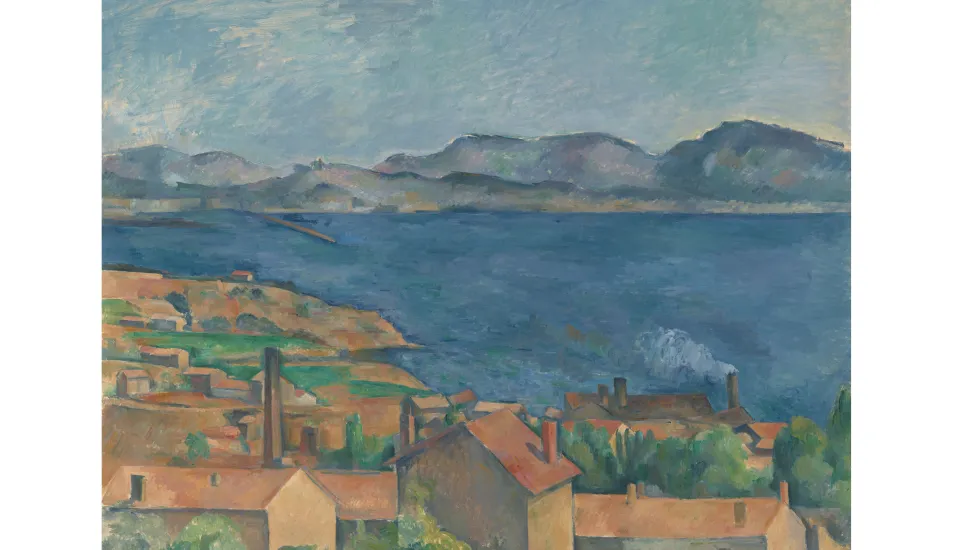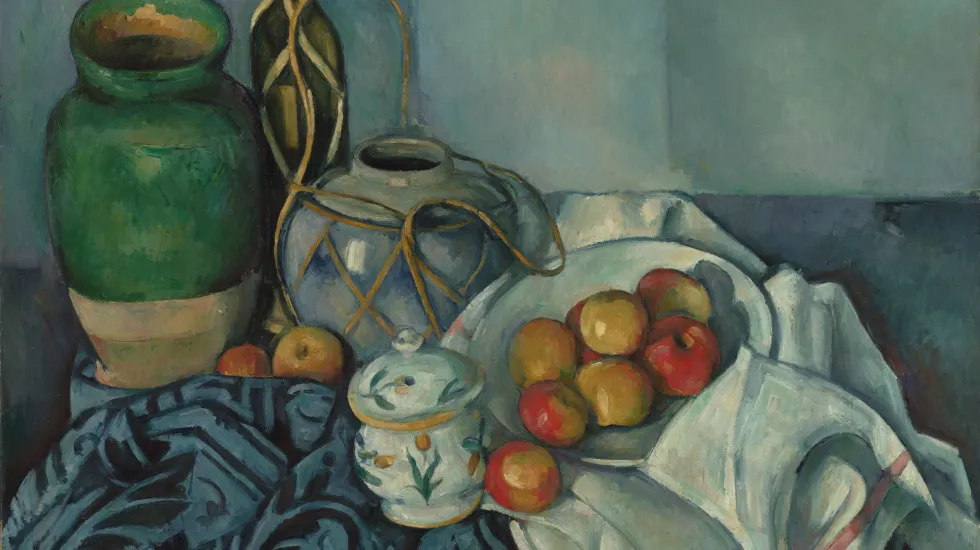
Artistic contemporaries of Paul Cezanne hailed him with labels like “the greatest of us all,” and the French Post-Impressionist was the focus of multiple major exhibitions in the 20th century with his iconic works assuring sizeable visitor turnouts.
But is Cezanne (1839-1906) still relevant today in an art world with so many competing styles and socio-political agendas, and can his name on an art-museum banner in 2022 still attract large crowds?
The Art Institute of Chicago believes the answer is yes. It has teamed with the Tate Modern in London to organize what is billed as the first major retrospective devoted to the artist’s work in the United States in more than 25 years.
‘Paul Cezanne’
When: May 15-Sept. 5
Where: Art Institute of Chicago, 111 S. Michigan
Tickets: $7 plus regular general admission
Info: artic.edu
The show, titled simply “Paul Cezanne,” will run May 15 through Sept. 5, with 80 paintings, 37 watercolors and drawings, four watercolor boxes and other painting paraphernalia, including loans from as far away as the National Gallery of Australia in Canberra.
“To bring together 123 works, it’s a very special occasion,” said Caitlin Haskell, the Art Institute’s curator of modern and contemporary art. “This is really a life story that is documented individual brush stroke by individual brush stroke.”
That Gloria Groom, the Art Institute’s chair and curator of painting and sculpture of Europe, is one of the three organizers of this show is not surprising, considering she has played a central role in major showcases in recent years of such Impressionist giants as Monet and Manet.
But the participation of Haskell and Natalia Sidlina, Tate Modern’s curator of international art, is surprising because Cezanne is not, strictly speaking, a modern painter. But that is exactly the point.
Besides giving viewers today a rare chance to explore the life and work of Cezanne in depth, the show’s three curators are seeking to show his expansive impact on modern art of the 20th century and make clear his continuing resonance right through 2022.

“For me,” Haskell said, “so much of what I understand about painting, modern painting and what modernism became in the 20th century grows out of the discoveries and challenges to traditions of painting that Cezanne made. So, I see him as the fundamental figure to the avant-garde material that I work on in our modern collection.”
Put simply, she sees Cezanne as the essential link between the once-radical experimentation of 19th-century Impressionism and 20th-century modernism. He undertook what the curator calls a “rupture of the picture plane,” a “faceted” approach to composition that anticipates the revolutionary rethinking of form known as cubism that emerged with Pablo Picasso and Georges Braque in 1907-08.
In works such as “Still Life with Apples” (1893-94) from the Getty Museum in Los Angeles, standard rules of perspective are overthrown and the objects look like they are about to slide off the table. Cezanne is less concerned about what he is depicting than how he is building a picture.
“This exhibition covers his career,” Groom said, “but it’s really focused on what makes a Cezanne a Cezanne.”
The artist’s impact did not stop with Henri Matisse and Pablo Picasso or even later 20th-century artists like Henry Moore, Jasper Johns (who emerged in the 1950s and remains active) and Lucien Freud.

To prove that point, the curators invited 10 contemporary artists, including Lubaina Himid, Kerry James Marshall and Luc Tuymans, to write essays about individual works in the show and reflect on Cezanne’s influence on their work. “It is kind of amazing that he matters so much today,” Groom said.
This retrospective is the first Cezanne show of any kind organized by the Art Institute in more than 70 years, what Groom calls an “odd” gap in time considering the museum has a substantial collection of the artist’s works, including eight paintings, all of which are in the show.
The exhibition puts an emphasis on the artist’s watercolors, including some of the museum’s rarely shown works in the medium like “The Three Skulls” (1902-06), which Haskell described as a “truly superlative” late watercolor. “Monet, Sisley and Degas, they are not watercolorists,” Groom said. “That is not their medium, but [Cezanne] really does make it his.”
Late in his career, Cezanne sometimes depicted the same subject in watercolors and oil paintings of comparative size to explore differences between the two ways of working. “The Three Skulls” is paired in the show with “Three Skulls on a Patterned Carpet” (1904), a very similar composition from the Kunstmuseum Solothurn in Switzerland.

Cezanne returned to certain subjects again and again, and nowhere is that truer than with his 30 or so paintings and watercolors of Montagne Sainte-Victoire, a modest peak in southern France. More than a dozen such depictions are represented in this show, including “Montagne Sainte-Victoire with Large Pine” (ca. 1887) from the Courtauld Gallery in London.
Another repeated and evolving subject are the bathers, which become what Groom called “abstracted, simplified ciphers in the landscape.” The show ends with one of three large-scale works in this series, “Bathers” (Les Grandes Baigneuses), ca. 1894-95, 50-by 77-inches, from the National Gallery in London.
“It’s a culmination of his thinking and abstracting,” Groom said. “You can’t help but see Picasso and a little bit of Matisse in it. It’s moving into the future, so that’s exciting.”







